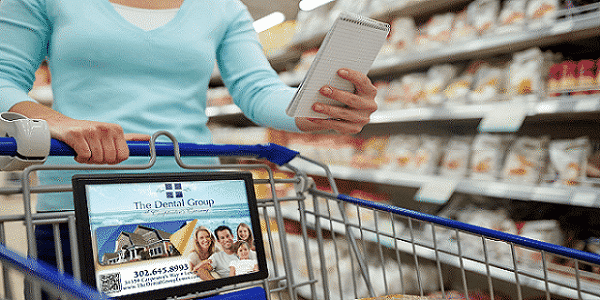It’s 2021, and the world is well into the digital age. The internet rules the world — people live on social media. For example, there are about 2.85 billion monthly active users on Facebook, which is a little more than a third of the world’s population. If you have an iPhone, you probably get a notification about your average daily screen time once a week. Is it half an hour? Two hours? Nine?
Digital advertising is a massive industry, with about 356 billion U.S. dollars spent in 2020. Businesses advertise on platforms like Yelp, Instagram, and Groupon. It’s relatively cheap and easy to set up a digital ad; these platforms make it easy. For example, Alphabet, the parent company of Google, one of the most recognizable websites in the world, makes about 80% of its revenue through selling advertisements.
Important as digital, online advertisements undeniably are, physical, real-world advertising and is still hugely important. Traditional advertising, as you might call it, isn’t going away anytime soon. In 2020, advertising media revenue worldwide was estimated at 578.08 billion dollars. Compared with the digital advertising spend referenced above, traditional advertising still makes up about half of all spend.
What is traditional advertising?
Real-world, physical, or traditional advertising — whatever you want to call it — means ads that exist in the real world. Pick up a magazine, flip through it, and you’ll see some traditional advertisements. Go for a drive, and you’ll see billboard advertising in action. You might drive by real estate bus bench advertising on the side of the road.
Traditional advertising can look like a political sign stuck in your neighbor’s front lawn. It also looks like Cartvertising or coupon receipt advertising. Shopping cart advertising rates are affordable, especially considering how effective those ads can be. People grocery shop every week; it’s a great way to reach customers exactly where they are.
In summary: a real-world, traditional advertisement is just one that isn’t on your phone or your computer; it’s an advertisement that could’ve feasibly existed 50 years ago.
Benefits of physical marketing
Some of the benefits of digital advertising are very clear: affordable, easy to iterate on, easy to target to precise audiences. The benefits of physical advertising might be less clear. There are quite a few, however: visual impact, tangibility, shareability, targetability.
- Visual impact is major. Suppose a consumer walks or drives by a big billboard every day or sees a particular advertisement on their shopping cart every grocery trip. In that case, it will inevitably be seared into their mind. You can’t avoid it. It’s bigger than it would be were it on a smartphone screen, for one. This is a huge benefit. You can’t deny that people truly see real-world ads — it’s so obvious but so important.
- Tangibility is also very important. A significant flaw of digital advertisements is how brief they are. They don’t really exist; you can’t touch them. They’re fleeting — click or scroll away, and they’re gone. It’s harder to avoid a physical advertisement. Plus, things like flyers, promotional t-shirts, and business cards are all advertisements. These are objects people can touch, take into their homes, and live with. There’s staying power.
- Shareability follows tangibility. People can trade business cards. You pass a flyer out to someone walking on the street. You can also share digital ads, sure, but it’s just not the same. How many promotional emails do you think people get a day? Apparently, in 2019, 293.6 billion emails were sent every single day. There aren’t exact numbers, but it’s safe to assume that at least a few billion of those were purely promotional. It’s hard to get noticed in that deluge. A shared physical advertisement will have a bigger impact.
- Targetability exists in both digital and physical advertising, but it’s more direct in the real world. Do you run a restaurant near a highway offramp? Put up a billboard a half a mile before the offramp — now anyone, traveler or local, will be far more likely to turn off and visit your business for lunch. Want to reach people who go to gyms? Go to every gym in town and put up a flyer. It’s cheap, easy, and precise.
Balance your advertising strategy
As illustrated through the statistics above, current advertising spend is somewhat split between traditional and digital. Therefore, an effective marketing strategy will utilize multiple channels, physical and digital.
The modern customer only has so much attention to spare. In any given niche of any given industry, there’s usually stiff competition. Where one restaurant opens, others are sure to follow if they aren’t already there.
Local businesses, in particular, need to focus on traditional advertising. Yes, you can spend your money wisely on locally targeted digital advertisements, but it’s harder to compete with more prominent companies and organizations that have more money to spend on digital campaigns.
Be smart about your marketing strategy. Set a precise budget. Understand your customers. With the right strategy, balanced between traditional and digital, you’ll see your business grow in real-time.


 By Talitha Turkin
By Talitha Turkin
